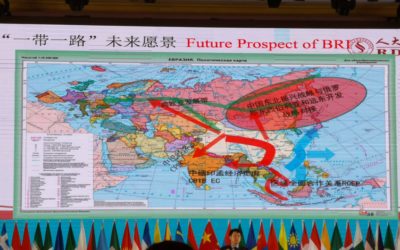Mergers and Acquisitions (M&A) aim for financial stability of a business and wealth maximization of shareholders. It provides a potentially bigger and diversified market share. In these days, it is the most commonly use methods for the growth of companies. M&A are a dominant means of globalization and is key to scaling up and internationalization.
The potential problems of M&As are aplenty. Ego issues, inflated books, race against time, misrepresentations, etc. As long as the business looks profitable, the merged / acquisition parties are happy but when profits go south, then the finger pointing begins.
M&As should be familial not financial. If M&As are driven purely by finance, it is going to be a disaster for the business. Finance in business rarely takes a long-term view. It is the maximization of profits in the shortest time. Finance people laugh all the way to the bank. Maybe it is solely driven by time value of money. But great businesses are the greatest collateral damage if such a view is adopted.
M&A Reasons
Collaborations and synergies, often touted as reasons for M&As, are highly advantageous to M&A parties. This brings in, among other things, cost savings + efficiencies (CSE), value, returns and profitability. CSE brings in sharing of resources, centralization of corporate functions and systems, elimination of duplicate overheads, optimization of over-capability, shared networks, business optimization, managing financial risk, elimination of double incidence of taxation, shared technology and human resource reallocation. These can bring about high profitability by itself.
M&A Headaches
i-contact
Though the term “merger” implies a creation of a single entity from two or more equals this does not work in practice. There is no i-contact – both in terms of seeing eye to eye and discarding egos; both of speaking on the same eye level and equal egos. In most merger discussions, getting the two to see eye to eye itself is a daunting task. There will always be a bigger equal in terms of higher revenues or profits, or in terms of potential growth or their war-chest. And when the captains of the business come to an understanding, the professionals will come in with their own set of needs and wants to potentially scuttle the deal. This is worse in an acquisition. There will always be a difference of opinion in every aspect of valuation depending upon the buy or the sell side. Warren Buffet’s “price is what you pay, value is what you get” would probably be the anti-thesis of such business deals.
Non-prima inter pares
The big problem and headaches for M&A reasons are many a times the perception of primus inter pares. There is always the issue of one being bigger than the other. Whether it be in terms of revenues or profits or growth or talent or arrogance of cash. Substantial amount of time is spent in sorting out the babel from benefits. Hence when 2 or more parties get into a room, it is very difficult for them to have a balanced discussion or negotiation and this leads to high protraction of deal completion.
Human Capital
Human capital (HC) deals with all three tenses – past, present and future. It is strategic and takes into consideration issues beyond logic as well. HC is probably the first collateral damage in an M&A. While M&As are supposed to bring in CSE of scale, paradoxically, most of the valuable existing experience in a company is lost in redundancies, lay-offs, retrenchment, human resource conflicts. This capital which has high return on investment, must be captured and reallocated in an M&A.
Professionals assisting in M&As are also part of HC. If the professionals’ vision is not aligned with M&A parties, the M&A is headed towards dangerous times. Such professionals, even with good intentions, will take the M&A one step forward, but 3 steps back.
On a different note, an interesting development in HC companies getting into an M&A would be the development of big data and analytics and its application on the experience of individuals. With most interested individuals expressing / uploading their thoughts in some form of the other on the web, one day sufficient processing speed and bandwidth can give us the benefit of this experience.
Time
Time is money, time is the enemy. But it is a long-term investment. In the haste to close a deal, most M&As gloss over critical issues. Time is also the culprit in closing deals over weekends resulting in missing out potential added costs, disputes, rushing go-to-market, pushing to agreements without careful consideration and relationship building (cf. guanxi below). Time is not speed and speed is not time. What is important, is speed based on calculated timing. An M&A built on relationships takes time, but it calculates the long-term benefits of working well together resulting in a high average speed.
Legal
The importance is always understated and misunderstood, especially in international M&As.
Merged & Acquired – Solution
- M&As are delicate subjects. In these cases, I say that the shortest distance between two points is never a straight line. Diplomatic skills, EQ, empathy, motivational theory applications, change management and cultural integrations are pre-requisites for a successful M&A. This actually saves time in the long run and are the multiple points that in fact bring the main 2 points together.
- Capture and reallocation of HC in merged or acquired companies. This capital which has high return on investment in an M&A.
- Guanxi – Like most Chinese expressions, guanxi is complex. Simply put, it means “relationships” (but without hierarchy). Build understanding and acceptance before M&A. It forms what I call Human Due Diligence.
- Find professionals that give you the paradoxical and elusive “Collaborative M&A with Organic Growth” that consider contribution by all parties to an M&A to help each other increase output, increase customer base, improve and develop new products and successfully deploy HC.
For partnerships, speaker and general business enquiries with 2iB Partners:
| Contact Person | Dylan Tan |
| Designation | COO |
| Dylan@2ibpartners.com |
YOU MAY LIKE
2iB Partners goes to Silk Road Summit 2018 in Zhang Jia Jie, China
15th Oct, 2018 - 2iB Partners attended the Silk Road Summit Conference in Zhang Jia Jie, China along with some other Singapore delegates. The conference was attended by Delegates from more than 80 countries attended the Summit, including former...
M&A – The Legal Angle
M&A - The Legal Angle The solution and problem in a merger or acquisition is regulatory in nature. In all cross-border deals, there is no go-around to regulations. Laws are enacted to essential protect life and property of its citizens. Therefore, it...
Why M&As Go Wrong
Acquisitions that are rushed can result in problems and challenges after closing in a transaction: Some of the reasons why M&As go wrong are: 1. Assumption Asymmetry Leaders and owners may over value a target by making assumptions including...
[Video] 2iB Partners Speaks at Southeast Asian M&A and Corporate Investment Conference 2017
In the above video, Managing Director of 2iB Partners, Mr. Yang Yen Thaw delivers a 50 minute speech on Legal issues in cross-border Mergers & Acquisitions (M&A) and a new approach to M&A. 2iB Partners formed part of a repertoire of experts...
Panelist Commentary on Fintech in Healthcare: Partnerships & Regulatory Frameworks – 27 October 2017
A commentary by Yang Yen Thaw on his views in the panel discussion on Accelerating Innovation: Partnerships & Regulations on the topic "Fintech in Healthcare". The panelists were Yang Yen Thaw, Managing Director of 2iB Partners, Astrid S. Tuminez, Regional...
8 Points to consider for an IPO
In the previous parts, for Preparing your Company for a Liquidity Event, we covered: 8 Preparatory Steps 8 Considerations 8 Legal Points For the last installment of the series, we’d like to touch on a little on the supposed “holy grail” of companies – the...






![[Video] 2iB Partners Speaks at Southeast Asian M&A and Corporate Investment Conference 2017](https://2ibpartners.com/wp-content/uploads/2017/11/B87I9434-400x250.jpg)

